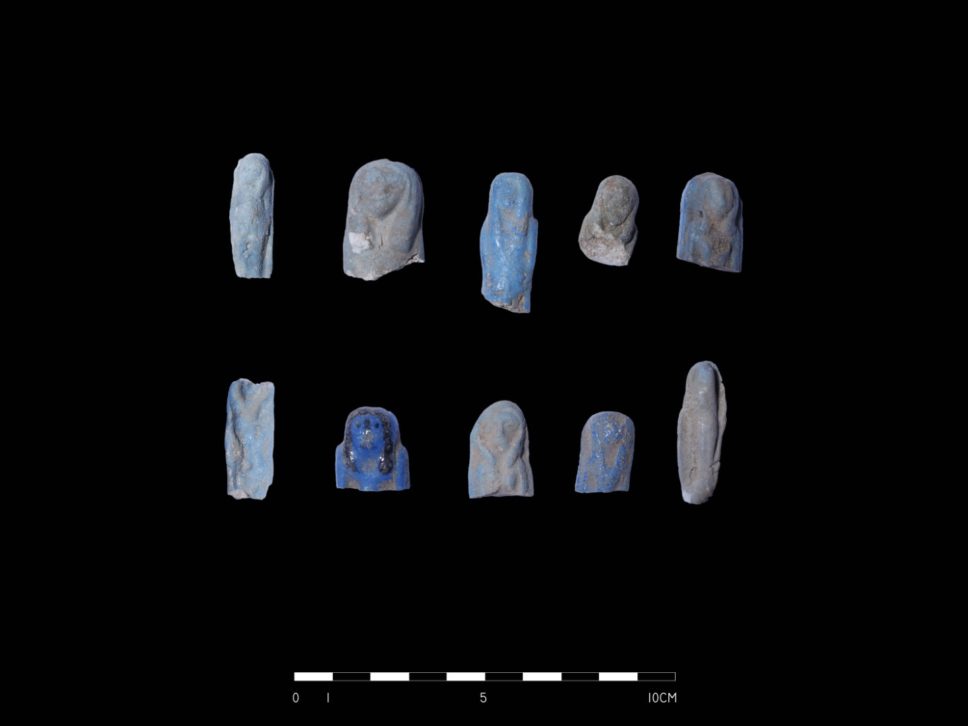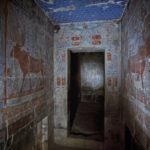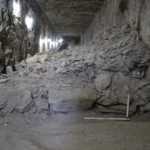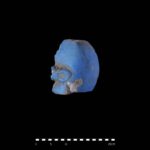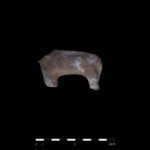In 2021, the Polish-Egyptian Archaeological and Conservation Expedition at the Temple of Hatshepsut at Deir el-Bahari worked in the field twice, in the spring and autumn seasons. The excavation of the tomb located below the Hathor Chapel provided exceptional discoveries – several hundred votive offerings to Hathor, the patron goddess of the Theban necropolis and protector of the dead, were identified.
Research of the Polish Centre of Mediterranean Archaeology of the University of Warsaw at the Temple of Hatshepsut at Deir el-Bahari was initiated in 1961 by Prof. Kazimierz Michałowski, and since 1967 extensive reconstruction work has been carried out on the entire temple. At present, it is one of the most famous and most frequently visited ancient Egyptian architectural monuments. The impressive building, partially carved in the rock, consists of three cascading terraces ending in porticoes were accessed by ramps erected on the temple’s axis. It is surrounded by a vast courtyard preceded by a processional alley.
Since 2020, intensive conservation work has covered the Hathor Chapel located on the south side of the temple’s Middle Terrace. Their aim is to safeguard the rich decoration of the chapel and make it accessible to visitors. At the beginning of 2021, excavation work located on the processional alley leading to the Chapel was undertaken and provided wonderful discoveries.
Although the temple of Hatshepsut has previously been the subject of excavations by several foreign expeditions, there are still many sites within the temple that have escaped the attention of earlier archaeologists. At the western end of the alley leading to the Hathor Chapel, a tomb dating back to the reign of Mentuhotep II, who ruled Egypt 500 years before Hatshepsut’s time, was discovered in the late 19th century. The discoverer of the tomb, Swiss archaeologist Édouard Naville working at the time for the Egypt Exploration Fund, decided that the rock rubble filling the interior of the underground corridor and sarcophagus chamber did not promise to find any interesting artefacts. However, the latest excavation works of the PCMA UW expedition proved something completely different
– says Dr. Patryk Chudzik, the head of the expedition.
Apart from the remains of the tomb furnishings of the original owner of the tomb, a large deposit of objects dedicated to the goddess Hathor was discovered in the rubble. These included mainly small faience figurines depicting naked women with long braids falling on their shoulders, amulets depicting a woman with cow ears, clay figurines of cows and numerous ceramic vessels with modelled breasts. The ensemble of offerings also included numerous fragments of sculptures dedicated to the goddess Hathor.
The compact character of the find clearly proves that all these objects were deposited in the tomb over a short period of time, and their state of preservation – most of them surviving only in fragments – indicates that they were brought to the site by the temple priests, who regularly collected the votive offerings brought to the chapel and deposited them elsewhere in Deir el-Bahari, creating a kind of ‘rubbish dump’. The need to remove the gifts brought by the worshippers resulted from the great popularity of the cult of Hathor, whose main place of worship at the Theban necropolis was Deir el-Bahari
– explains Dr. Patryk Chudzik.
Download as press release (PDF)

